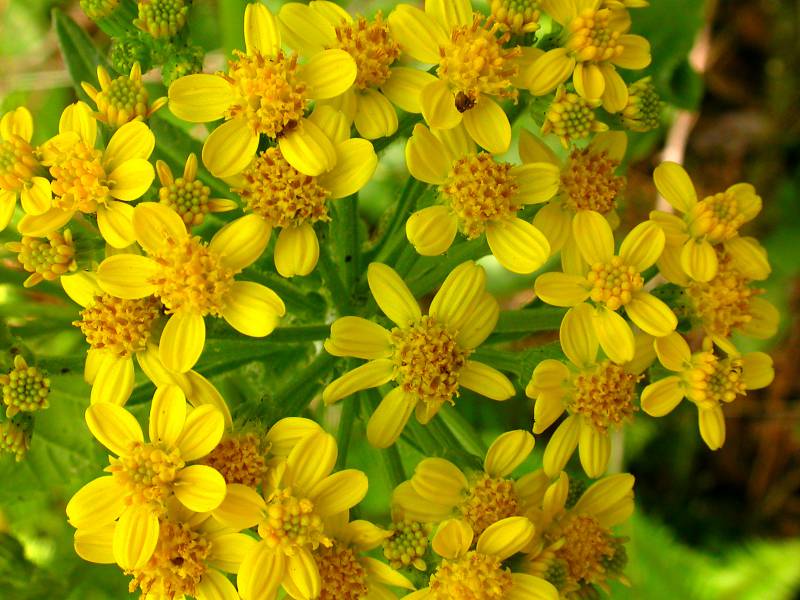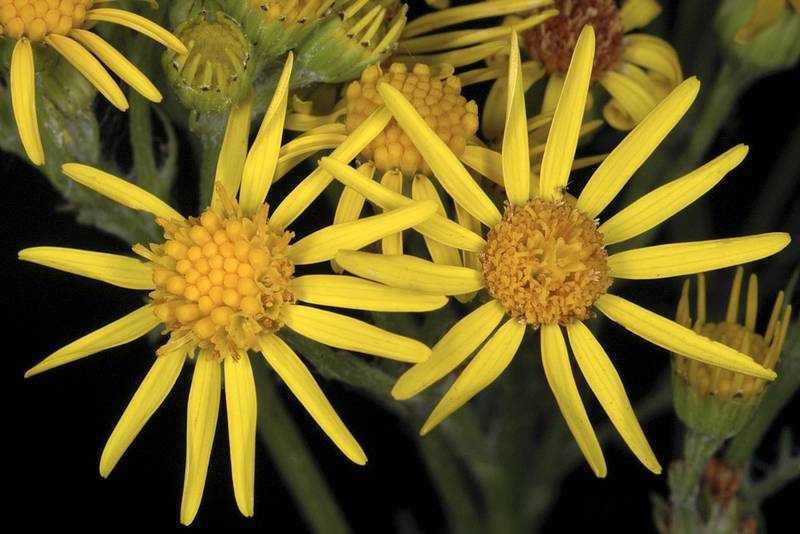Senecio integerrimus
Senecio jacobaea
one-stemmed butterweed, western groundsel
Usually entire, elliptic to broadly lanceolate, the basal ones petiolate, the blade and petiole 6-25 cm. long and 1-6 cm wide;
cauline leaves progressively reduced upward, becoming sessile toward the top of the stem.
Evenly distributed along the stem, only slightly reduced upward, mostly 2-3 times pinnatifid, 4-20 cm. long and 2-6 cm. wide, the lower petiolate and often deciduous, the upper becoming sessile toward to top of the stem.
Heads several to numerous in a rather congested inflorescence;
involucre 5-10 mm. long;
rays 6-15 mm. long, usually yellow, occasionally cream.
Heads rather numerous in a short, broad inflorescence, the disk usually 7-10 mm. wide;
involucre about 4 mm. high, its bracts about 13, over 1 mm. wide, dark-tipped;
rays about 13, 4-10 mm. long.
Senecio integerrimus
Senecio jacobaea
- Local floras:
BC,
CA,
OR,
WA
- Local Web sites:
CalFlora,
CalPhotos,
Flora NW,
PNW Herbaria,
Turner Photog.
WildflowerSearch
iNaturalist (observations)
USDA Plants Database
- LBJ Wildflower Center
- SEINet
- Plants of the World Online
- Encyclopedia of Life
- Wikipedia
- Google Image Search
- Local floras:
BC,
CA,
OR,
WA
- Local Web sites:
CalFlora,
CalPhotos,
Flora NW,
PNW Herbaria,
Turner Photog.
WildflowerSearch
iNaturalist (observations)
USDA Plants Database
- LBJ Wildflower Center
- SEINet
- Plants of the World Online
- Encyclopedia of Life
- Wikipedia
- Google Image Search



